All-in-one coolers have come a long way and the best AIO coolers are a great way to keep your CPU cool. And with modern silicon's dynamic performance levels, maintaining excellent cooling is more important than ever. A good quality AIO cooler doesn't just keep your rig cool and quiet, it can directly impact the performance of your system thanks to the way the turbo modes of modern CPUs work. But there are hundreds of coolers to choose from. Where to begin?
What follows is a list of our favourite AIO coolers, all of which have been tested by us. We know our readers have different wants and needs, so we’ve picked a range of options to suit all budgets and use cases.
But if you've made the decision to go for an AIO cooler, ask not what the best AIO cooler is, ask what is the best for you and your partnering components. Which one you go for will depend on your particular needs. There's a lot to consider; there's the radiator size and case compatibility, the cooling capacity, value for money, noise levels, reliability, and yes, looks are important too.
Perhaps most important consideration of all is choosing one that will fit in your case. Can it house larger radiators? You’ll also want to choose a cooler that can handle the TDP of your processor. A 120mm cooler is a no-no with a AMD Ryzen 9 5950X or Intel Core i9 11900K. Do you overclock? Are low noise levels you priority or is cooling ability your main concern? You’ll want to look at the fan specifications and noise ratings. Once you’ve settled on a list of criteria, then you can consider things like whether you want RGB or not or whether you have other components from the same manufacturer (so you don’t have to install yet another control app). Some AIOs even come with LCD or OLED screens atop the pump, so you can really tailor your own unique look. They’re pretty, but pricey.
Best AIO coolers
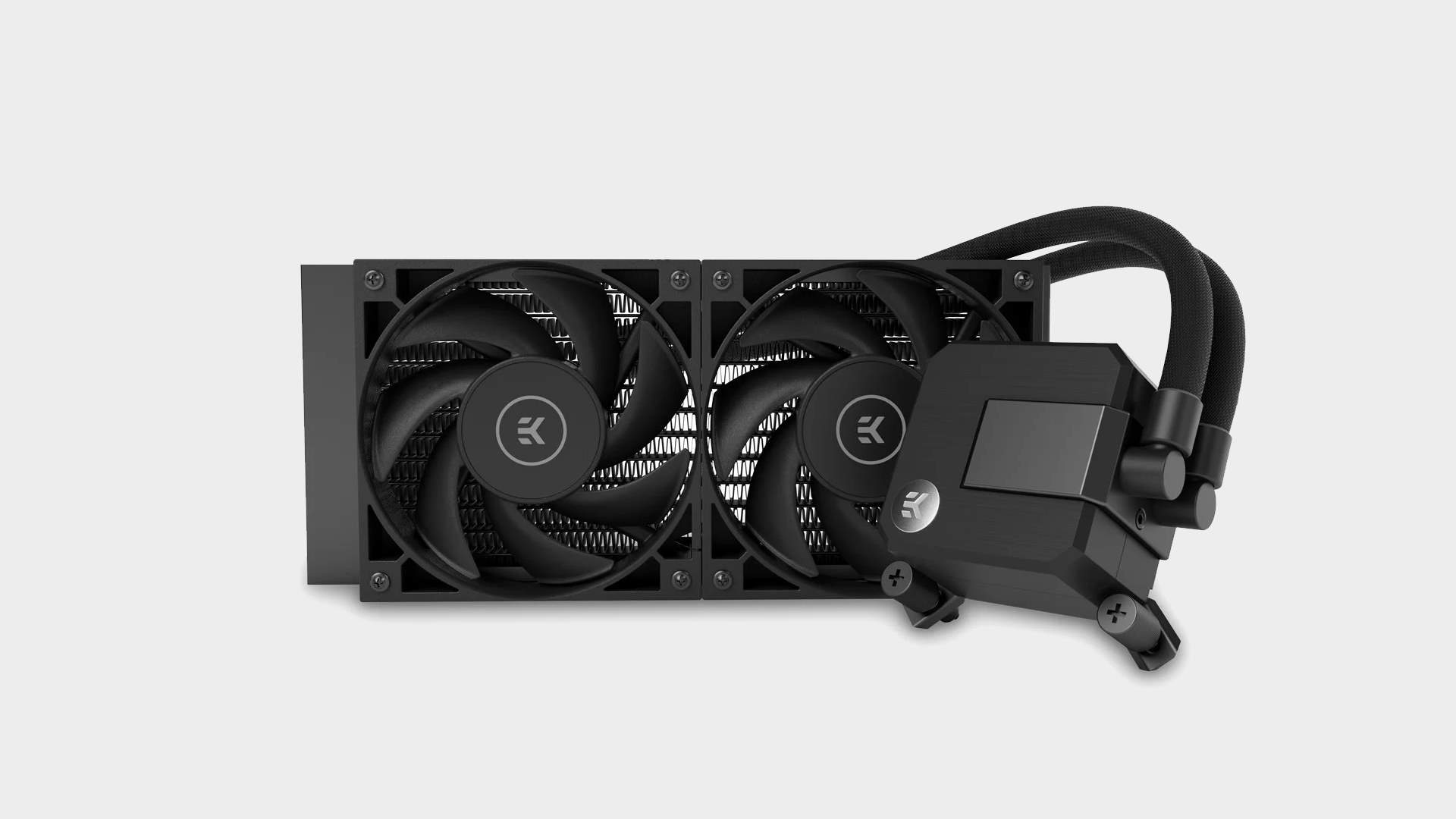
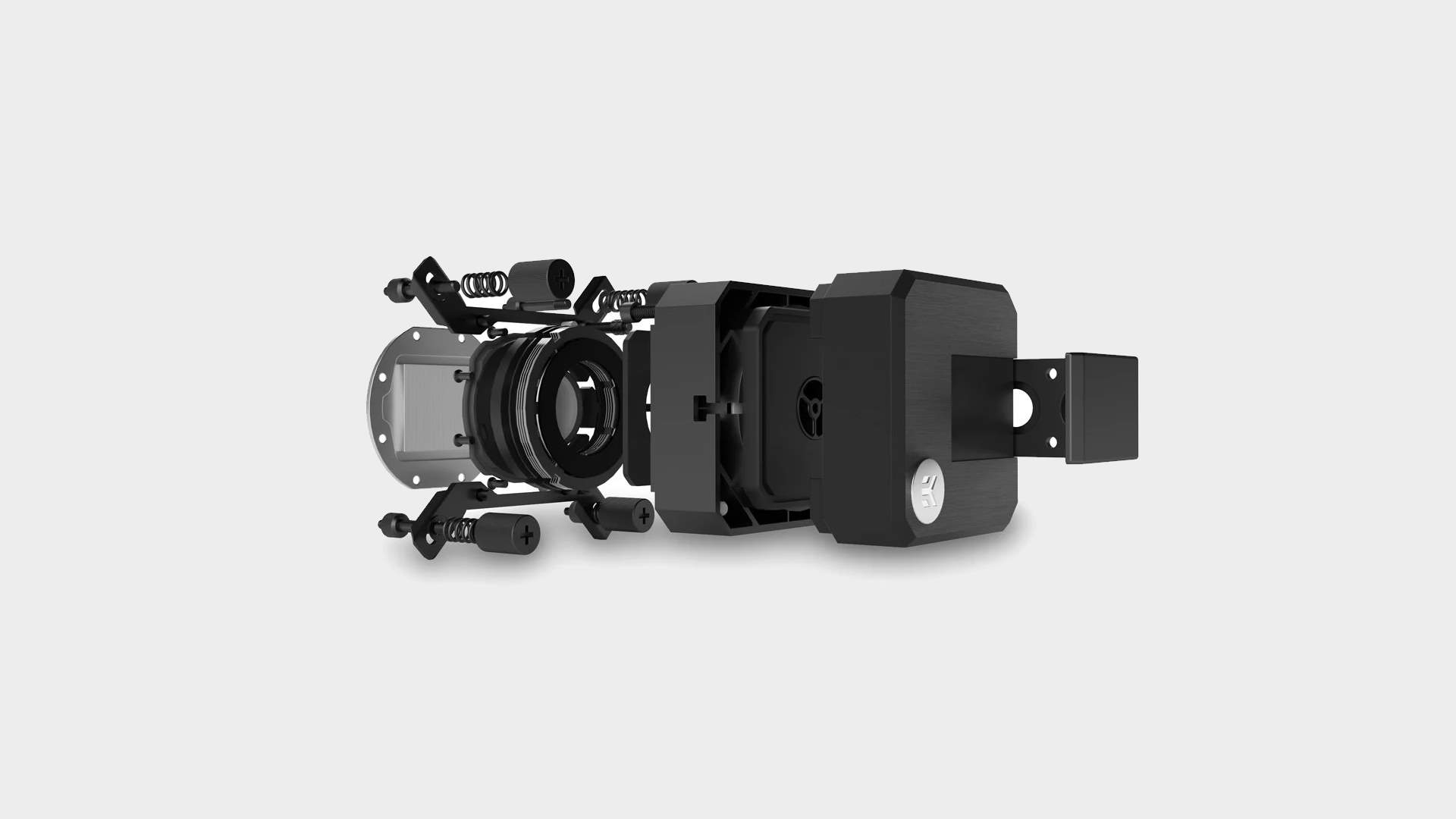
In the world of liquid cooling, EK is a name that needs little introduction. The EK Basic series focuses on value for money and performance. Plus, it doesn’t feature any RGB at all. If this appeals to you then the EK AIO Basic 240 is well worth a look. Its absence sure helps to keep the pricing down too.
The EK Basic 240 really stands out thanks to its build quality. It just feels hefty and well built. The included EK- Vardar fans are very good and have a wide operating speed range. It’s good to have some high-speed headroom on tap if you need it. Most of the time it stays essentially silent.
What really impresses us is the cooling performance on offer. We find it goes very close to 360mm levels of cooling capability, It does get noisy if you try to push an overclocked Rocket Lake CPU, but then pretty much every other cooler does too.
The EK-AIO basic 240 is perfect for builds with a stealthy focus or closed case builds where lighting doesn’t matter. With its build quality and high performance, it's a cooler that you can surely set and forget, out of sight, out of mind and out of earshot.
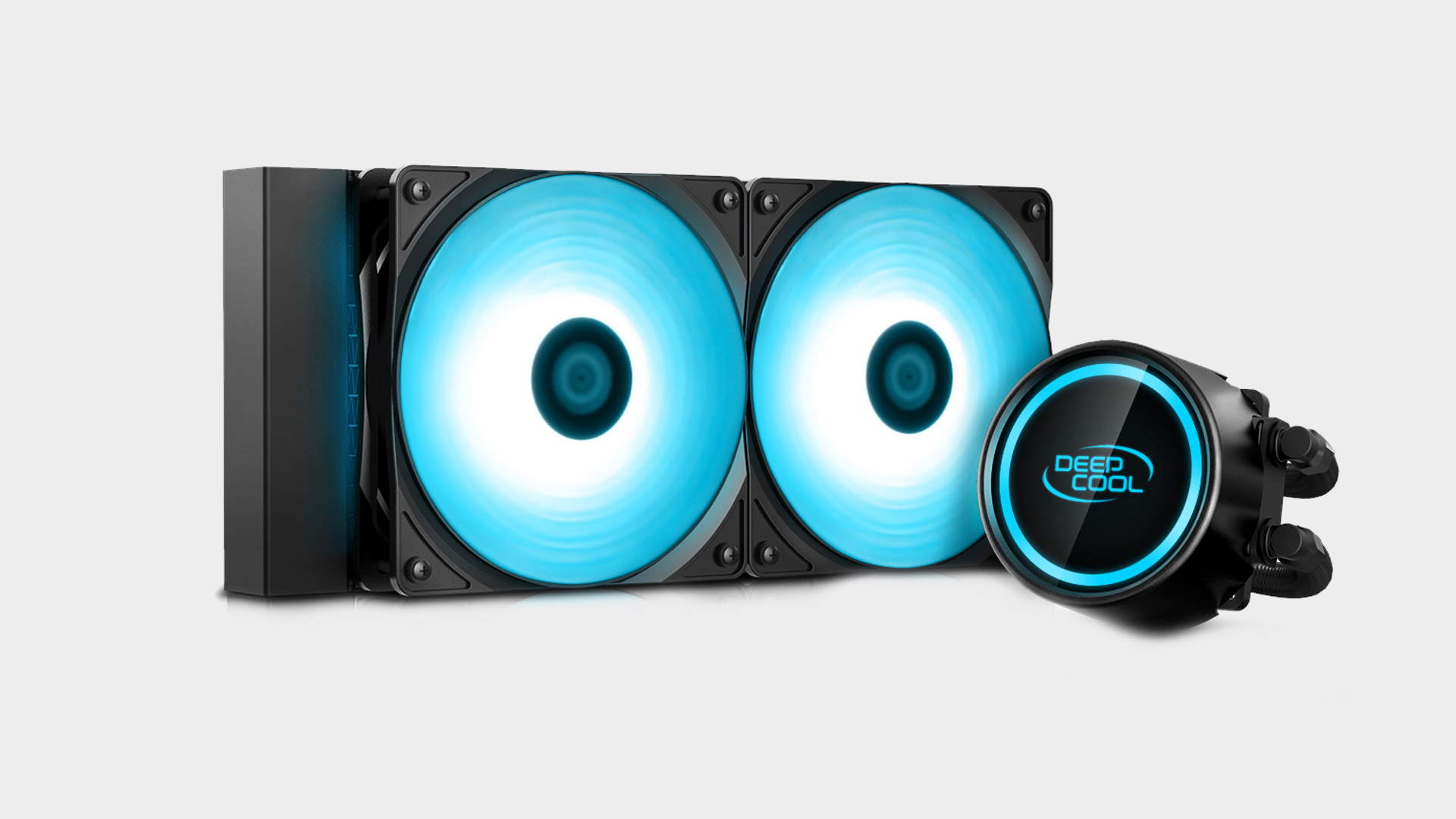
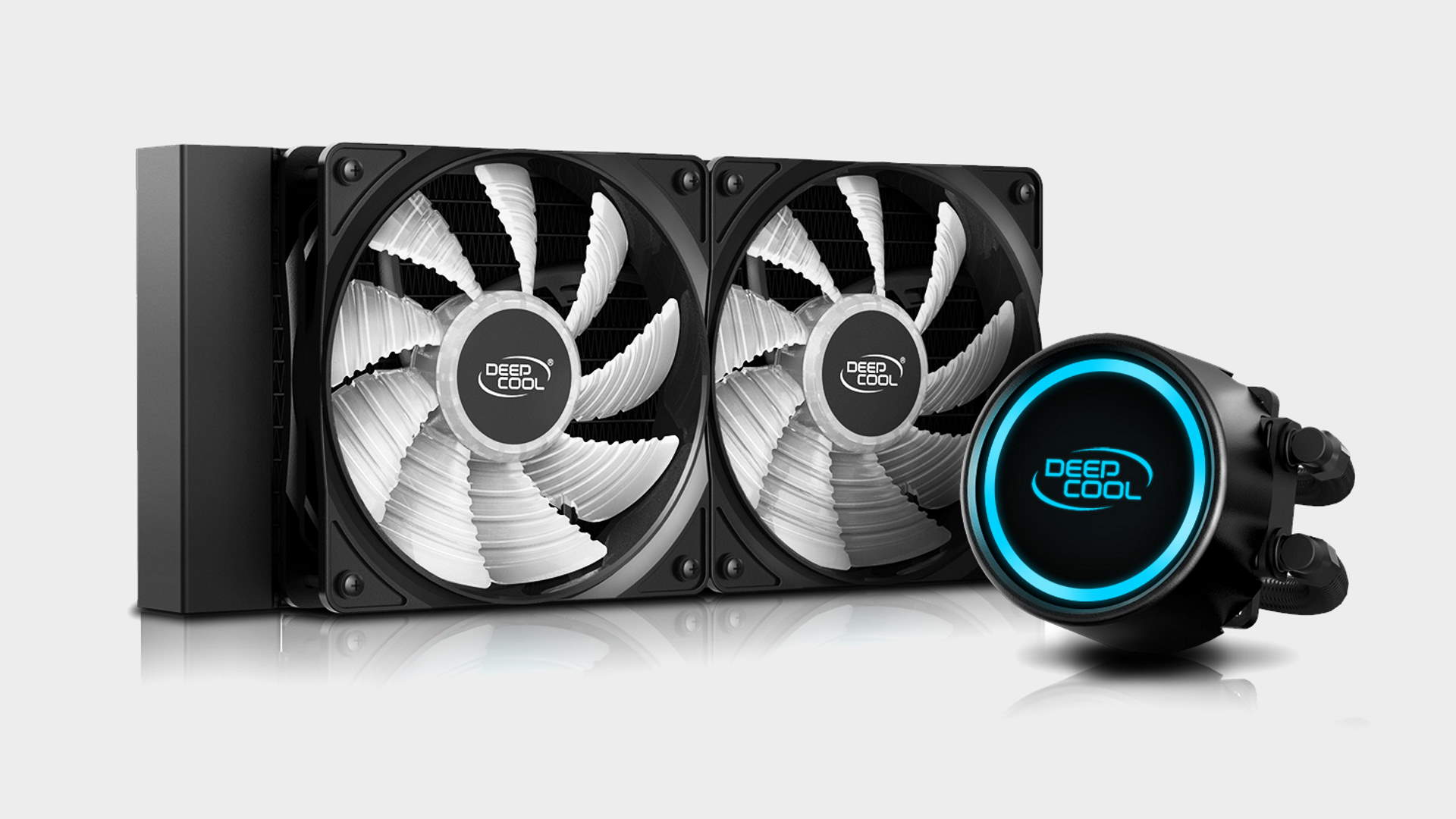
Deepcool is well known for its capable AIOs at affordable prices, and the Gammaxx L240 V2 is one of the cheaper 240mm coolers on the market. That makes it a great option for users looking to step up from air cooling into the world of AIO cooling.
The Gammaxx 240mm features basic RGB lighting on the pump head and fans. There’s a more expensive ARGB version should you really want it. Deepcool likes to talk about its ‘Anti leak technology’ which seeks to maintain an optimal pressure balance inside the loop. Which certainly can’t hurt.
The Gammaxx 240 is capable of cooling most processors, too, though like many of the chip chillers on this list it draws the line at AMD's Threadripper beasts. But it keeps the rest running with remarkably low noise levels, which is one of the main reasons we recommend it.
At idle the L240 is effectively silent. As you’d expect, you will start to see an increase in temperatures and noise levels with high TDP processors, especially when overclocking. Our 5800X CPU with PBO enabled is about the maximum we’d consider appropriate for a 240mm cooler. Under load, the fans can and do ramp up quite a bit.
If you’re after a 240mm AIO that’s inexpensive and quiet under less demanding loads, then the Deepcool Gammaxx L240 is a great choice. Sure, it’s noise levels can get high if you push it hard, but at this price it comes highly recommended.

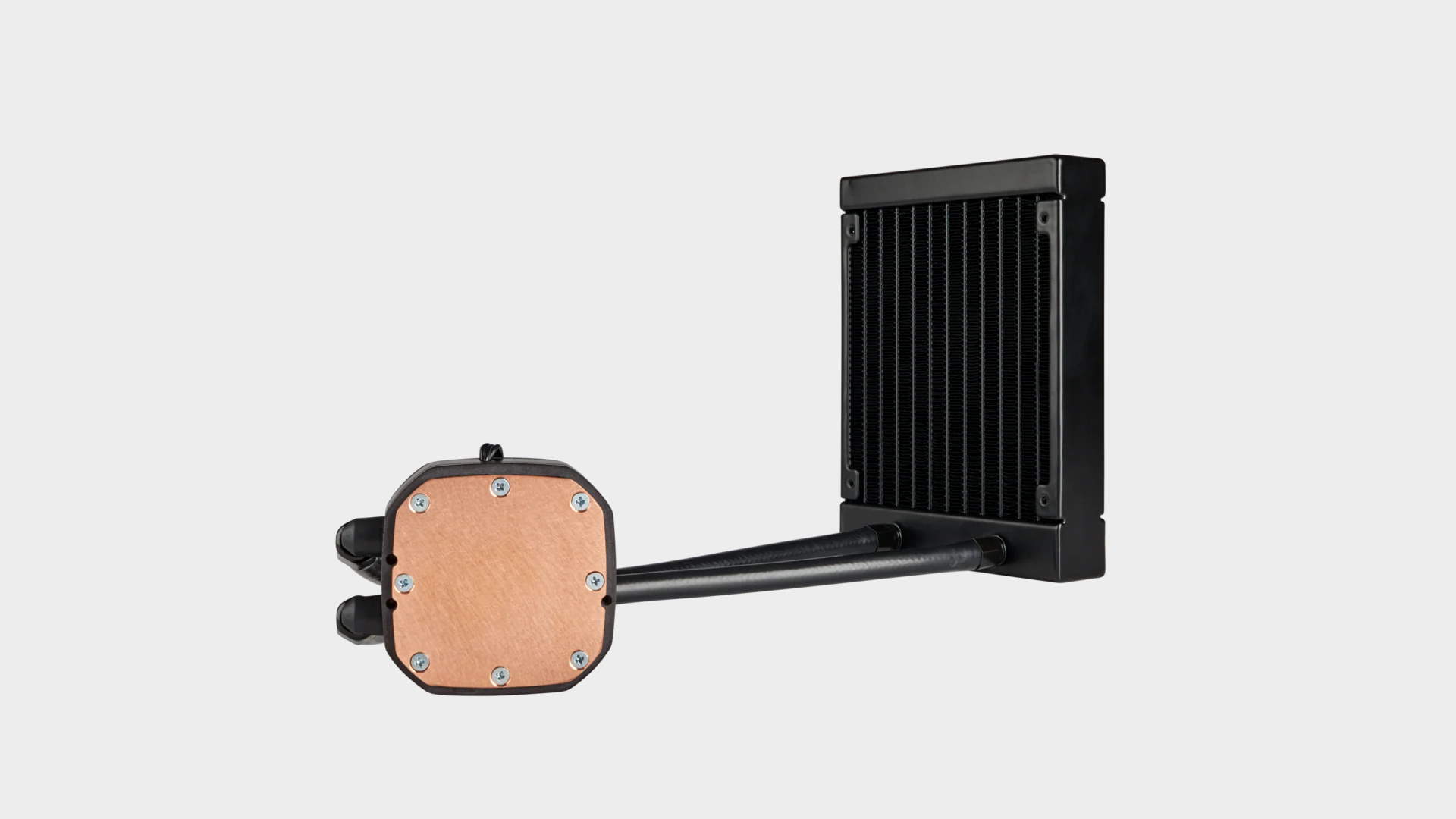
The Corsair H60 has been around for some time. Over the years it's seen its tubing, fan, pump and mounting upgraded. The 120mm AIO form factor won’t suit everyone, but those who require a compact cooler to suit something like a small volume ITX build will find it can perform as well as a decent mid-range air cooler. Notably, it lacks RGB, though there is some white lighting around the head.
The H60 V2 is well suited to processors under about the 95w level. Sure, it will be beaten out by a decent tower cooler or AIO with a larger radiator, but their dimensions often rule them out of SFF builds. Heat is the enemy of an SFF system, so the H60’s ability to eject hot air outside the case will benefit the whole system. Corsair includes its SP PWM fan, which operates at speeds of between 600 RPM (at which level it really is silent) up to 1700 RPM. It becomes clearly audible at that point.
The Corsair H60 V2 is perfect for a compact system. It's affordable and should outperform most low-profile air coolers and doing so without having to resort to unreasonable noise levels. It won't suit a high core count or overclocked processor, but then you shouldn’t expect it to. With the right partnering components, it’s an easy recommendation.
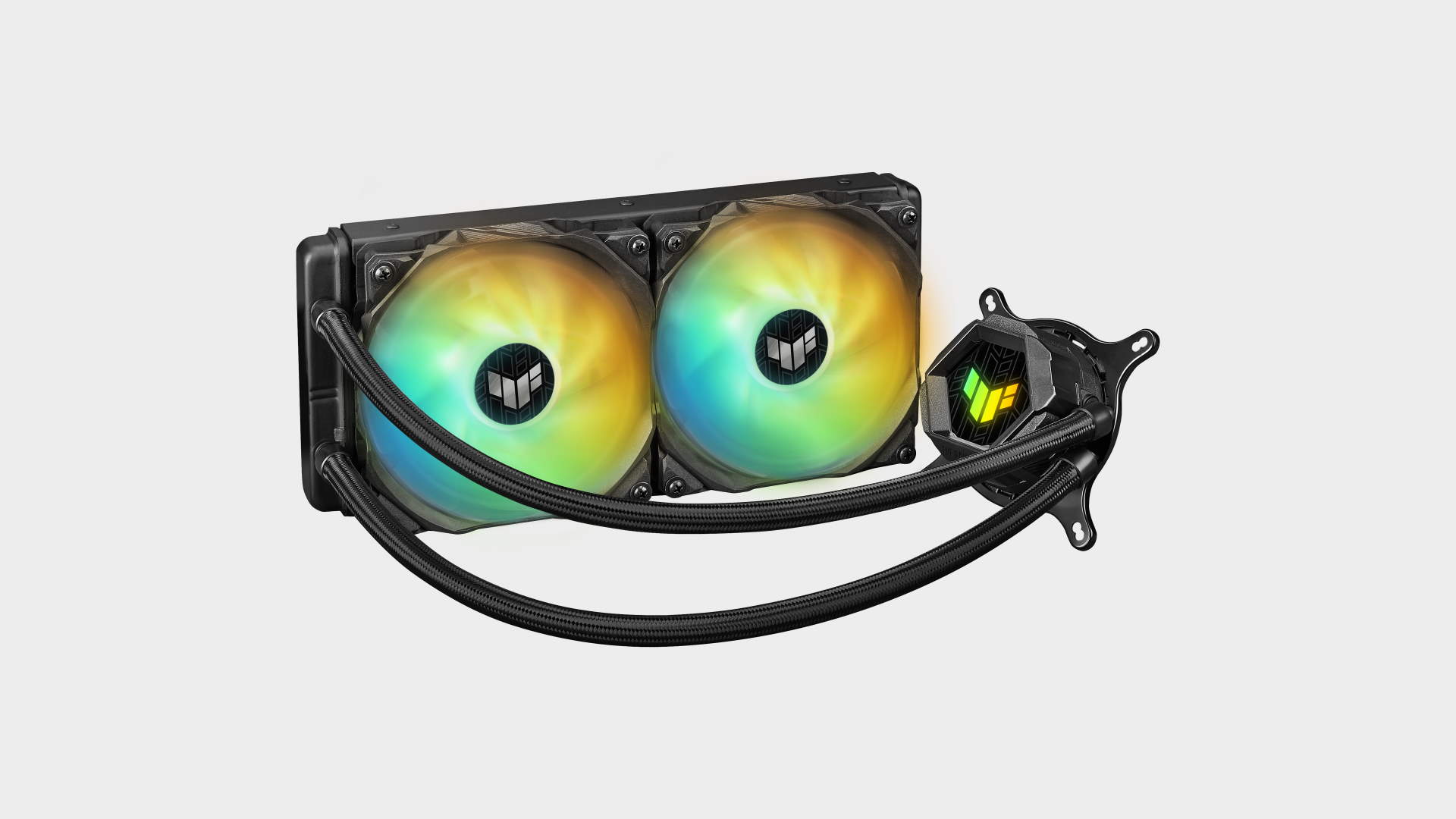
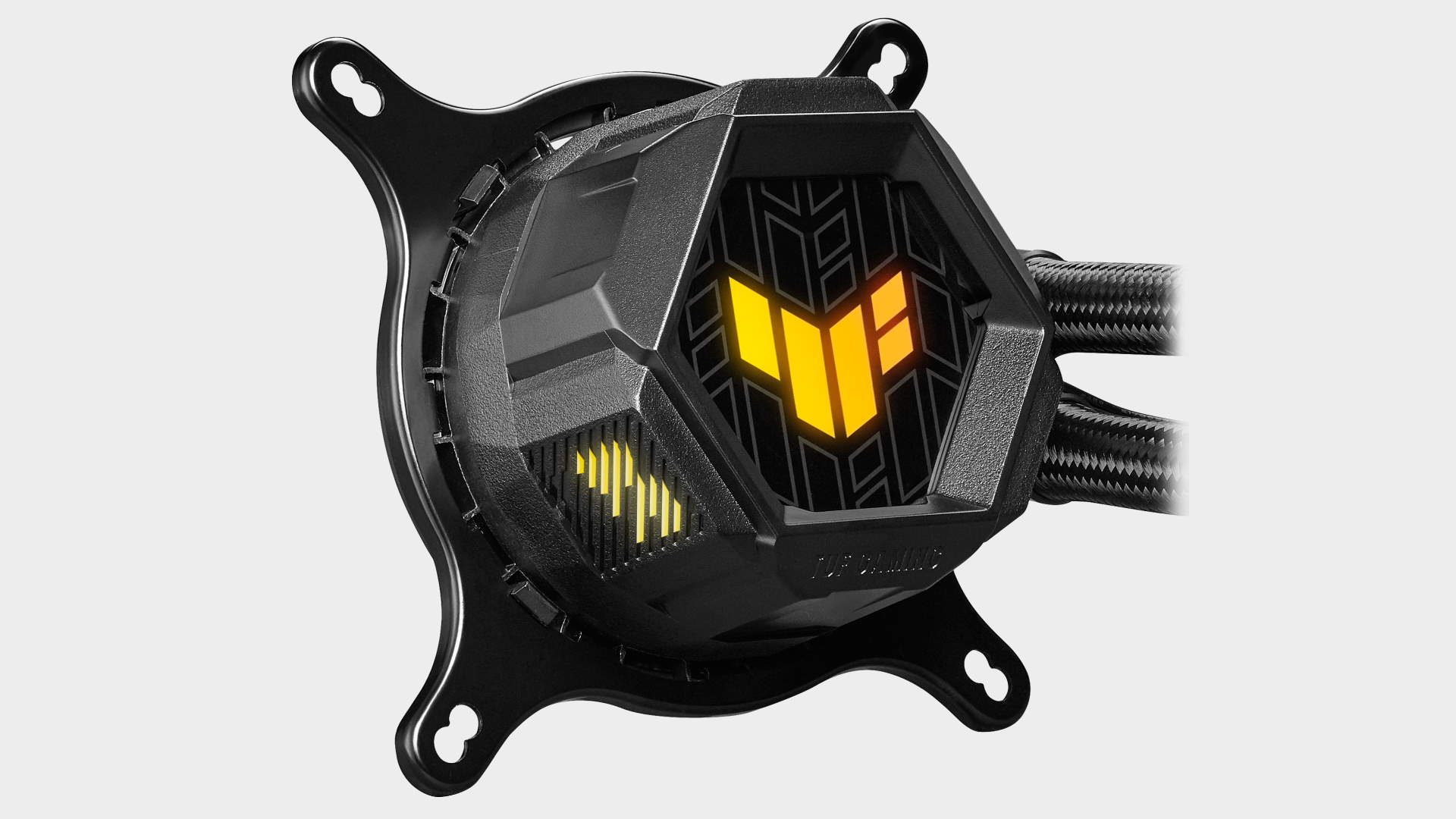
Asus wouldn't be the first name on most people lips when it comes to affordability, but the TUF Gaming LC 240 offers great value for money and, thanks to its support for addressable RGB, it's a good way to add colour and capable cooling at the same time, all without having to spend a whole lot of your hard earned cash.
As an Asetek-built unit underneath, it is in many ways similar to a lot of other coolers, but Asus has chosen to include fans that are tuned for low noise operation, with a maximum noise rating of just 29dB(A). Even when it's running at full speed, it stays very quiet, though this also means that it won't deliver the low temperatures of some other 240mm units. But unless you're loading up a high core count processor for long periods, this won't be a concern.
If you're looking for an affordable AIO with ARGB support that's also quiet and affordable, then the LC 240 ARGB is well worth a look. Install it and you'll forget you’re even running a liquid cooler. One of the other key characteristics of the TUF brand is reliability, and the LC 240 ARGB comes with a six-year warranty for that little bit of extra peace of mind.
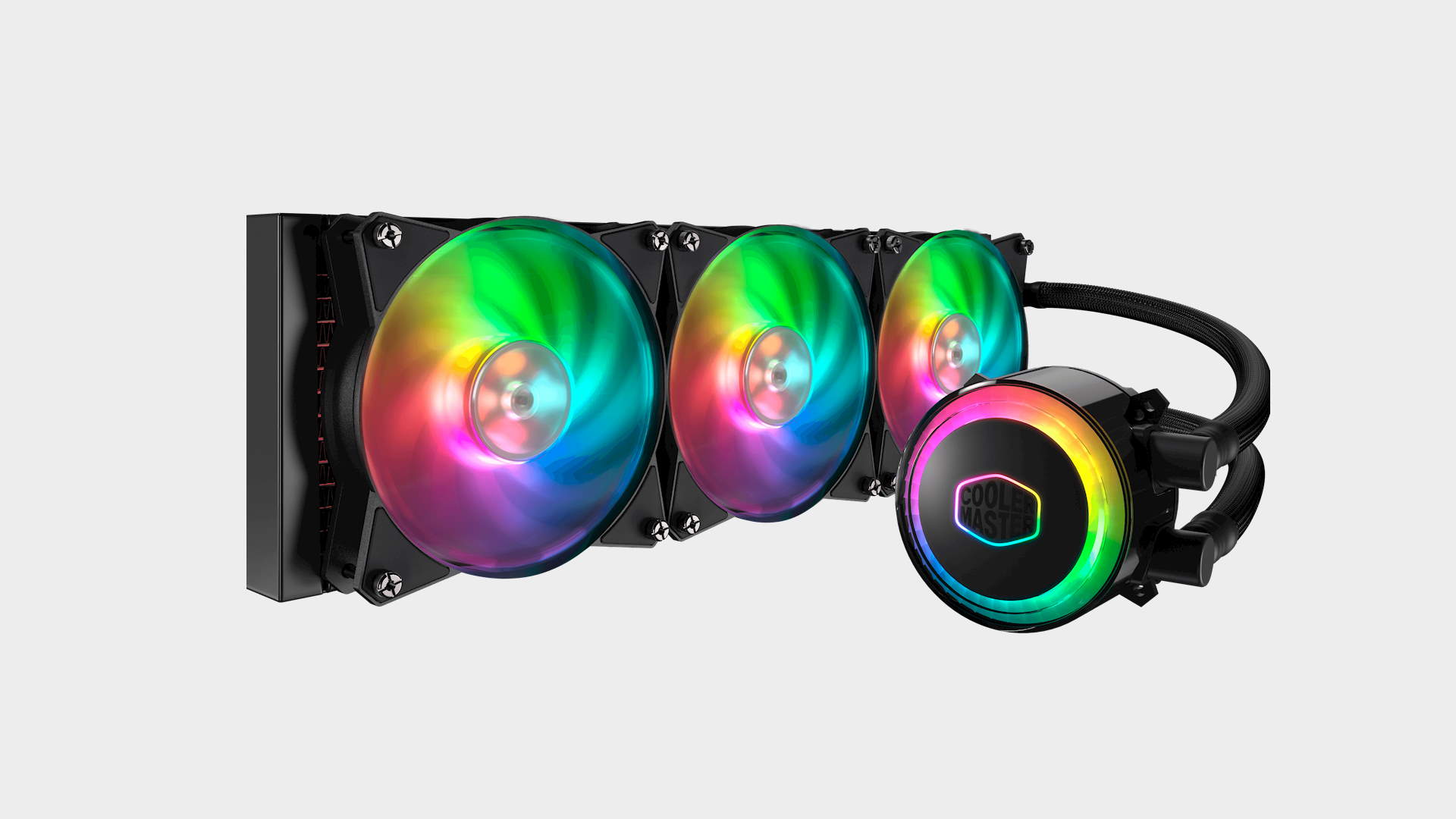
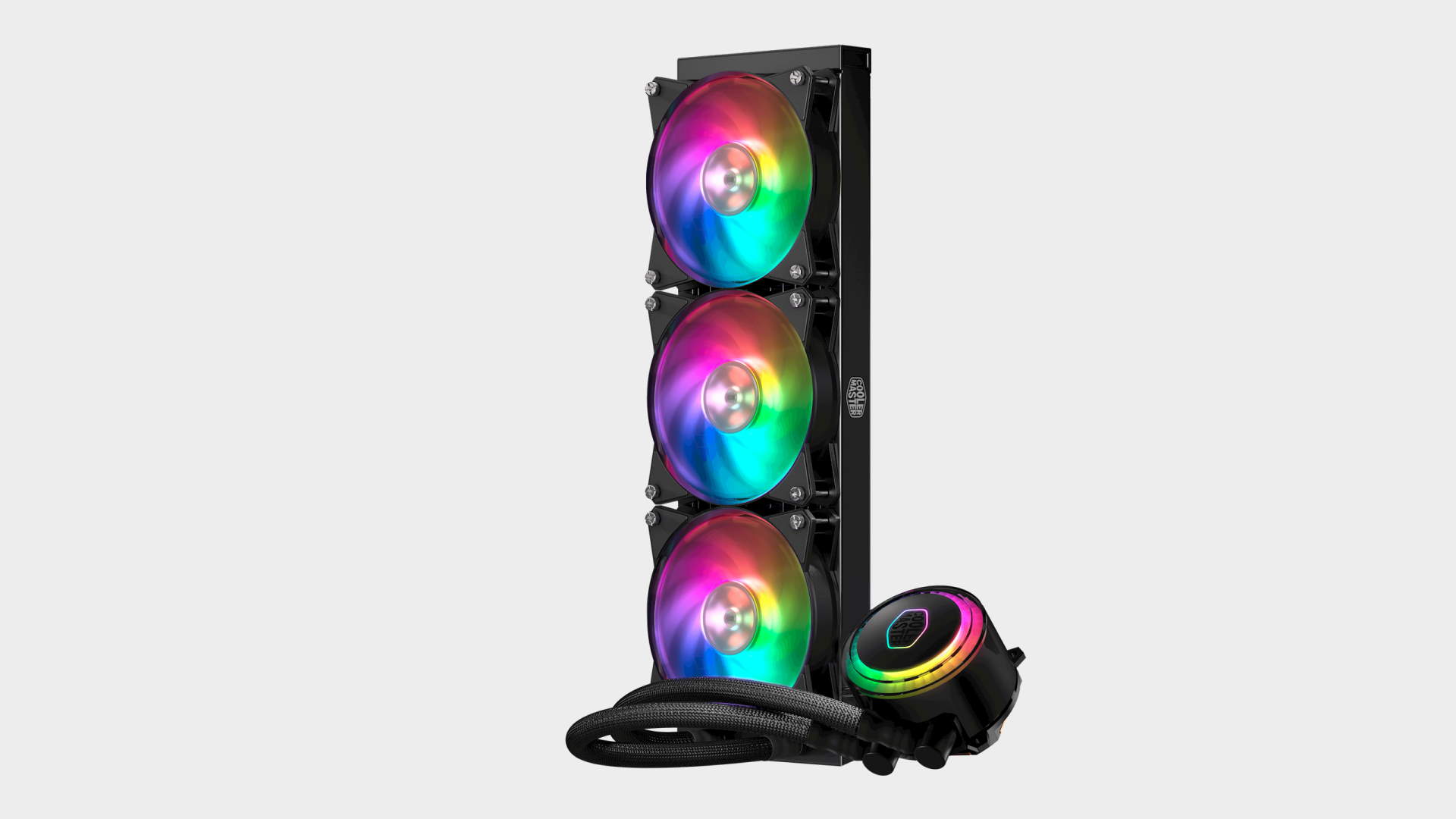
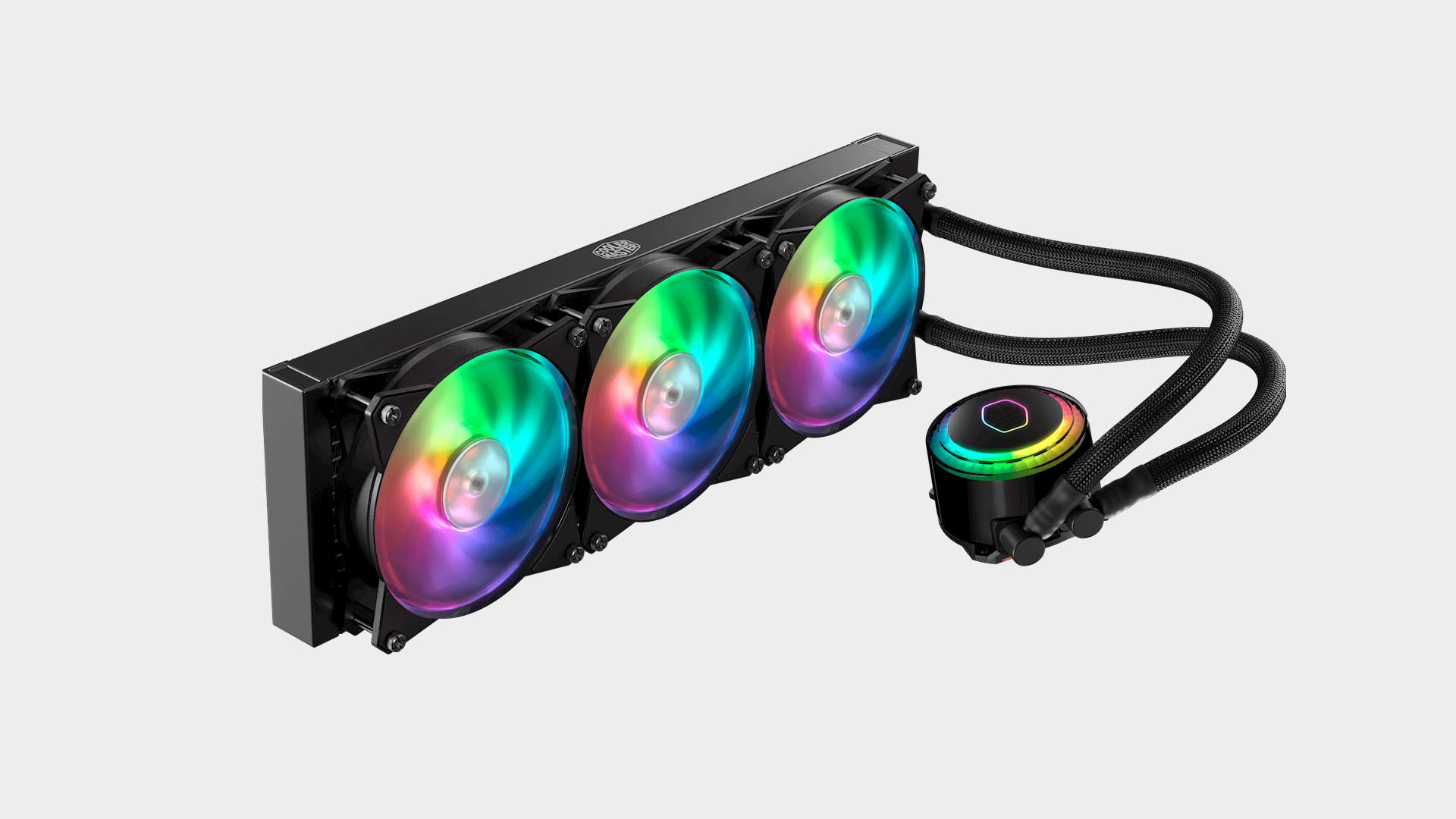
The Cooler Master MasterLiquid ML360R RGB isn't the newest cooler on the market, but it's been one of our favourites for a long time. It offers a good blend of cooling performance and ARGB customisable good looks. It just so happens to be one of the better value RGB-supporting 360mm coolers on the market. What's not to like?
The ML360R comes with its own RGB controller, which is great if you hate installing too much software on your system. There might be a bit of cable spaghetti, but with some careful routing, this shouldn't be a problem.
Performance-wise, the ML360R is very good, though AIO manufacturing has come a long way and it's no longer the class-leading performer it once was. That probably sounds too harsh, because the ML360R is certainly no dud and it will handle a modern high core count processor with ease.
The Cooler Master ML360R is a very good all rounder. If your case can handle a 360mm rad, you'll find it offers a great blend of cooling ability, good noise levels, ARGB good looks, and as it is now a mature market entrant, offers very good value for money. The ML360R is an oldie but goodie, and it remains a favourite AIO of ours.
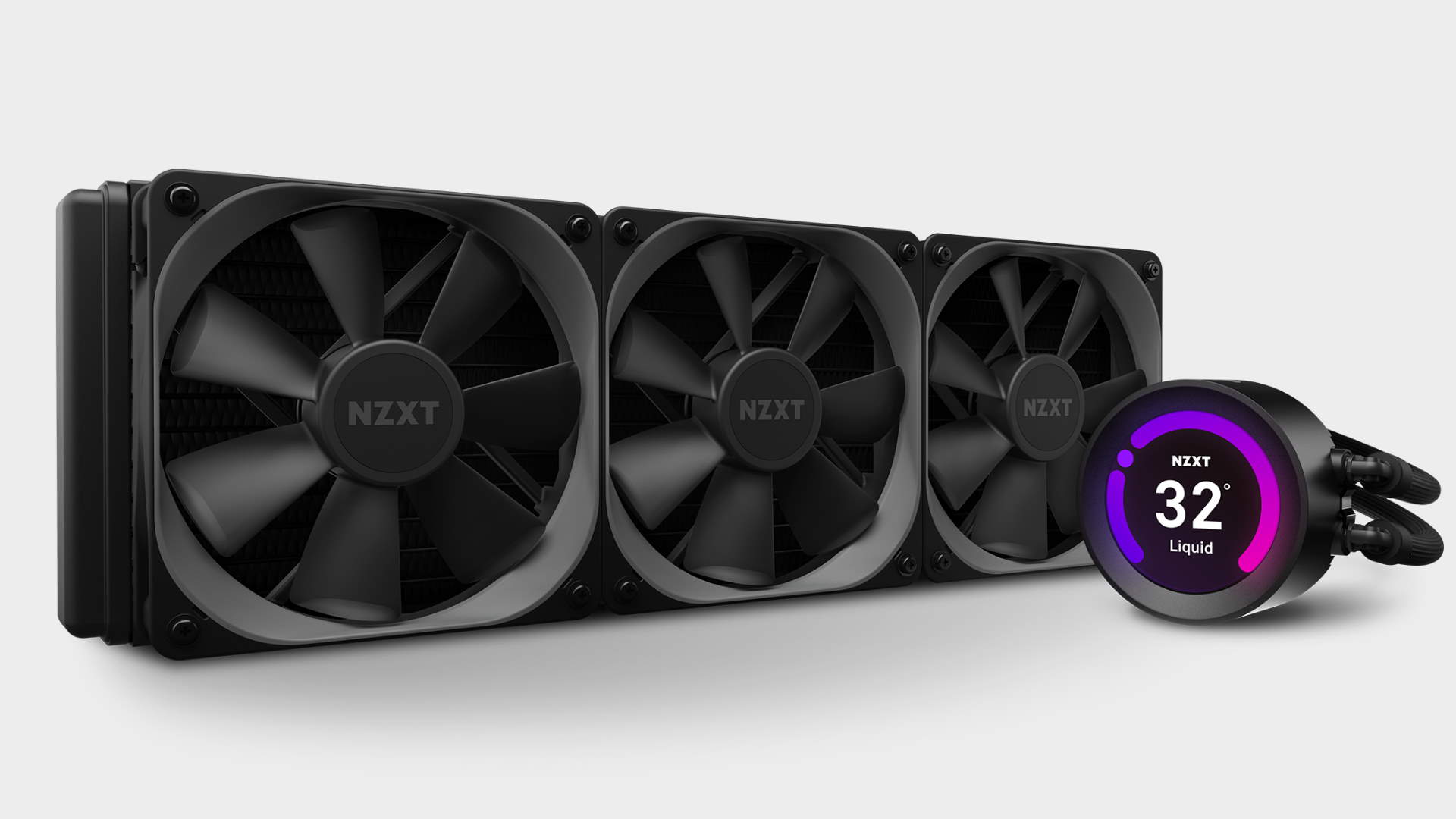
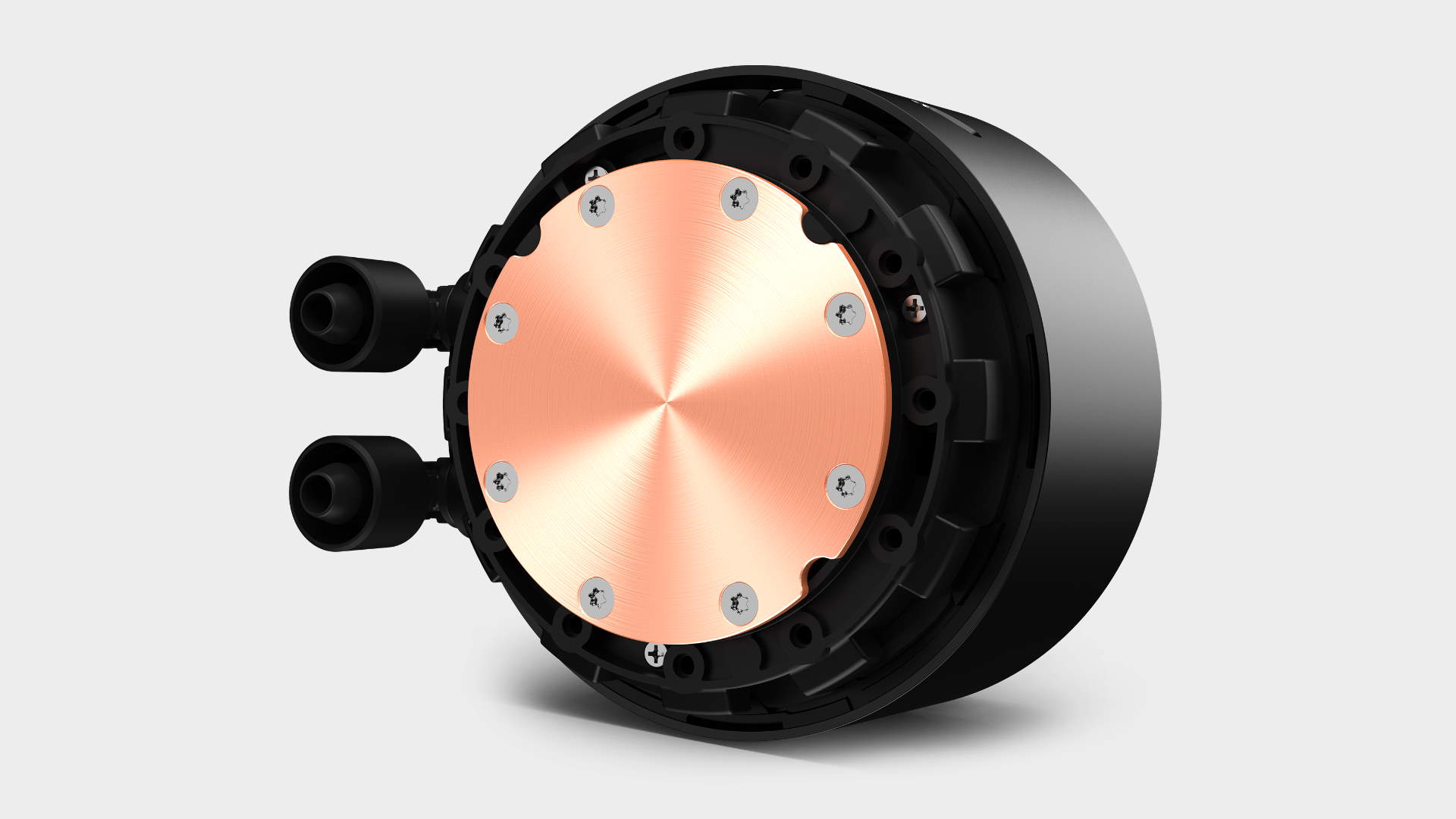
Sometimes only the best will do, and short of a fully custom loop, it's hard to go past the NXZT Kraken Z73. It's pricey to be sure, but is oh-so-pretty, and has awesome performance to go with it.
The highlight of the Z73 is its head mounted LCD. It can display monitoring info in conjunction with NZXT’s CAM software, or you can use your own custom GIFs. It adds a lot of cost to the unit, but it really does look great. Do note that the fans don’t have any lighting at all. This one is all about the pump head.
The Kraken Z73 can tame pretty much any chip you care to throw at it. Its fans can run as high as 2800 RPM, which means it can get loud, but we don’t mind having some optional headroom for times when you want outright performance—noise levels be damned. Under normal circumstances, it is very quiet indeed.
The Kraken Z73 is pricey, no doubt about it, but it’s the kind of cooler you’ll want to show off. It provides great cooling performance, there’s a lot of headroom for OC and once you’re done with that, you’ll spend ages playing with the LCD display on the way to creating a truly unique look for your rig.
Best AIO cooler
Is an AIO cooler worth it?
If you really want to go all out, you’re maybe better off with a fully custom water-cooling loop, but they are complicated, expensive, require maintenance, and have far more points of failure. AIOs are simple, they’re all but maintenance free, they're cheaper, and cool almost as well, at least the 360mm ones do anyway.
Is an AIO better than an air cooler?
The first question people have is usually this: Air or water? Air cooling is generally cheaper and simpler. High end air coolers are better than ever but they're very bulky, and good quality AIOs generally outperform them. Water cooling is more efficient, as water is a better thermal conductor, which means it's better at transferring heat away from your CPU. There remains a tiny risk of leakage, but this is becoming exceedingly rare.
Noise levels are highly dependent on the fans used, but other than outliers, such as comparing a 120mm AIO to a twin tower/fan combo, a good quality AIO will be quieter than an air cooler when presented with a high heat load.
In terms of actual peak cooling performance there's not a lot in it between the best of each category, but AIOs are generally quicker at getting from peak to idle temperatures than a straight air cooler is.
Do you need to refill AIO coolers?
The reliability of AIO coolers has come a long way. AIO leaks are exceedingly rare. Like any other mechanical device, there’s always the low possibility of a pump failure but luckily modern CPUs have protection built in should it get too hot. The bottom line is that you can run an AIO in your system with peace of mind. Coolers can 'degrade' over time, as coolant very slowly evaporates or falls out of solution but these kinds of things are becoming less of a concern as manufacturers learn new tricks and methods after years of testing and feedback. A modern AIO should serve you well for many years.
Can you use an AIO on any CPU?
As we move towards late 2021, an important thing to consider is socket support. LGA1700 compatibility is only just becoming a topic of discussion. So, if you're planning on building a 12th Generation system, pay close attention to the list of supported sockets. Stock from earlier in 2021 will lack support. You can expect manufacturers to offer compatible mounting kits and updated SKU's but if you're in doubt, make sure to check with the retailer or manufacturer to ensure your choice of cooler includes LGA 1700 support.




0 Yorumlar